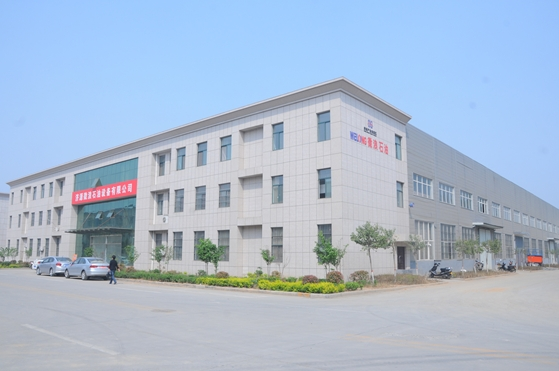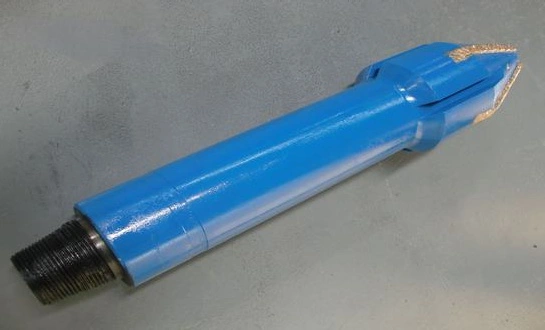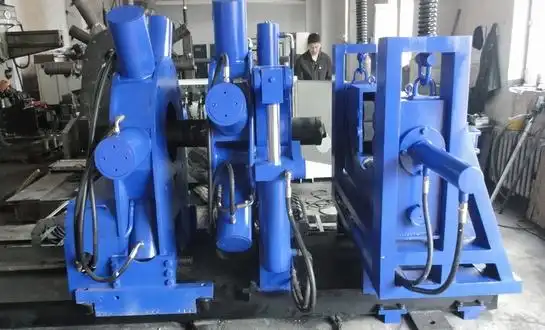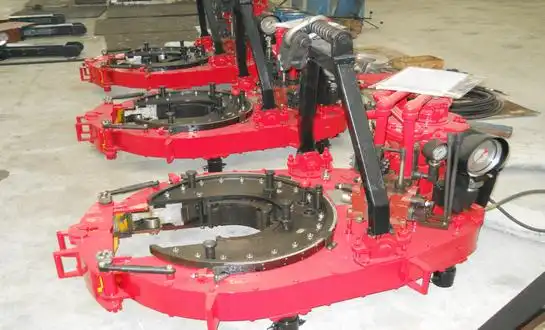How to Prevent Cracks During 42CrMo4 Shaft Forging?
Understanding Crack Formation in 42CrMo4 Forging
Crack formation in 42CrMo4 shaft forgings is a complex issue that arises due to several factors during the forging process. The chemical composition of 42CrMo4 steel, which includes a high carbon and alloy content, makes it particularly susceptible to cracking. This risk is heightened during processes that involve rapid cooling or uneven deformation, as these factors can induce internal stresses within the material. When forging 42CrMo4, it’s important to consider the steel's metallurgical behavior under high temperature and mechanical stress. A thorough understanding of these properties is critical to identify potential risk factors for crack formation and to develop strategies to mitigate them effectively.
Optimizing Forging Temperature and Heating Rate
One of the key ways to prevent cracking in 42CrMo4 shaft forgings is by optimizing the forging temperature. The ideal temperature range for forging 42CrMo4 steel is typically between 1150°C and 850°C, depending on the specific requirements of the component. Maintaining a stable and consistent heating rate during the forging process is essential to avoid creating thermal gradients that can lead to the formation of cracks. If the material is heated too quickly or unevenly, thermal stresses can develop, increasing the likelihood of cracking. To address this, manufacturers should implement precise temperature control systems that ensure the forging process occurs within the optimal temperature range. Advanced furnace technology and uniform heating mechanisms can significantly reduce the risk of crack formation, resulting in more reliable and durable forged components.
Implementing Proper Cooling Strategies
The cooling phase following the forging process is just as critical as heating when it comes to preventing cracks in 42CrMo4 shaft forgings. Rapid cooling can induce thermal stresses and cause phase transformations that may compromise the integrity of the material, leading to cracks. Therefore, implementing controlled and gradual cooling strategies is crucial for maintaining the material’s structural integrity. Cooling methods such as air cooling or slow furnace cooling allow the material to cool more uniformly, reducing the risk of stress accumulation. In some cases, intermediate heat treatments may be necessary between forging steps to relieve internal stresses, enhance ductility, and further reduce the potential for crack formation. By carefully managing the cooling process, manufacturers can improve the overall quality and reliability of the forged 42CrMo4 shafts.
What Causes Porosity in 42CrMo4 Forged Shafts?
Identifying Sources of Porosity in 42CrMo4 Shaft Forging
Porosity is a common issue in 42CrMo4 shaft forging, and it can arise from several sources, each contributing to the formation of voids within the material. One of the primary sources of porosity is gas porosity, which occurs when gases, such as hydrogen or nitrogen, are dissolved in the molten metal or react with the atmosphere during the forging process. These gases can form bubbles that become trapped within the material, creating pockets of porosity. Another significant contributor is shrinkage porosity, which happens during solidification when the molten metal cools and contracts. If the metal cools too quickly or unevenly, voids can form within the material as it shrinks. Lastly, improper forging practices can also contribute to porosity. For example, inadequate forging pressure or poor die design can result in incomplete material flow and uneven consolidation, which allows voids to develop.

Controlling Raw Material Quality for 42CrMo4 Shaft Forging
The quality of the raw material used for forging plays a critical role in preventing porosity in 42CrMo4 shaft forging. Using billets or ingots that are free from initial defects is essential to ensure the final product’s structural integrity. Before the forging process begins, manufacturers should implement stringent quality control measures to detect any potential defects in the raw material. This can include ultrasonic testing to detect internal voids or inclusions and chemical composition analysis to ensure that the material has the correct balance of elements. High-quality raw materials that are free from pre-existing defects will be less prone to porosity formation during the forging process, thus improving the overall quality and reliability of the final 42CrMo4 shaft forging.
Optimizing Forging Parameters to Minimize Porosity
One of the most effective ways to minimize porosity in 42CrMo4 shaft forging is by carefully controlling the forging parameters. These parameters include the forging temperature, pressure, and deformation rate, all of which significantly affect the formation of porosity. Maintaining an optimal forging temperature ensures that the material remains malleable and can flow properly, reducing the likelihood of gas entrapment or shrinkage during solidification. Adequate forging pressure is equally important as it ensures the material flows uniformly into the die cavity and consolidates properly, eliminating voids. Moreover, adjusting the deformation rate allows for a more controlled flow of material, helping to avoid uneven cooling and shrinkage. Advanced forging techniques, such as multi-directional forging, can further enhance material flow by subjecting the material to different deformation directions. This technique helps to reduce localized stress concentrations and promotes a more uniform structure, minimizing the risk of porosity. By optimizing these key parameters, manufacturers can significantly reduce the occurrence of porosity in 42CrMo4 shaft forgings, ensuring stronger and more reliable final products.
How to Avoid Inclusions in 42CrMo4 Forging Production?
Understanding Inclusion Types and Sources
Inclusions in 42CrMo4 forged shafts are non-metallic particles that can significantly affect the mechanical properties and performance of the final product. These inclusions are typically classified into several types, including oxide inclusions, sulfide inclusions, and nitride inclusions. Oxide inclusions often arise due to the reaction between molten metal and oxygen in the atmosphere. Sulfide inclusions can form when sulfur reacts with the metal during the steelmaking process, while nitride inclusions are typically caused by nitrogen absorption. Each of these inclusions can weaken the material, reduce its fatigue resistance, and make it more prone to failure under stress. The sources of these inclusions are varied. They can originate from raw material impurities, such as the presence of unwanted elements in the steel scrap or ingots used for forging. Additionally, reactions with the atmosphere during the forging process or contamination from external sources can introduce inclusions. Recognizing and addressing the sources of inclusions is crucial for minimizing their impact on the 42CrMo4 forged shaft and ensuring high-quality end products.
Implementing Clean Steelmaking Practices
The prevention of inclusions in 42CrMo4 shaft forging begins at the steelmaking stage. Clean steelmaking practices are fundamental in reducing the number and size of inclusions in the steel. Vacuum degassing, ladle refining, and advanced filtration techniques are all critical methods to enhance the cleanliness of the steel. Vacuum degassing, for example, helps remove dissolved gases, including oxygen and hydrogen, which can lead to the formation of oxide inclusions. Ladle refining processes further improve the steel’s purity by removing impurities and controlling the chemical composition of the steel. Additionally, advanced filtration techniques, such as continuous casting with degassing units, help filter out solid inclusions, resulting in cleaner steel. Close collaboration with steel suppliers to specify cleanliness standards ensures that only the highest quality material is used for forging, thus reducing the likelihood of defects in the final 42CrMo4 forged shaft.
Optimizing Forging Environment and Tools
The forging environment itself plays a significant role in preventing the introduction of external inclusions during the forging process. A clean forging environment is essential to avoid contamination from dust, dirt, or other external sources that could introduce impurities into the 42CrMo4 steel. Regular cleaning and maintenance of forging dies and tools are necessary to eliminate any residual material that could lead to inclusion formation. Furthermore, using protective atmospheres, such as inert gases or vacuum conditions, during forging can help reduce reactions between the molten metal and oxygen, thus minimizing oxide inclusion formation. The selection of high-quality lubricants and release agents is also critical. These should not react with the steel at forging temperatures, as some substances can cause surface defects or promote the formation of inclusions. By carefully optimizing the forging environment and tools, manufacturers can significantly reduce the risk of inclusions, ensuring the production of high-quality, reliable 42CrMo4 shaft forgings.
Source: CHINA WELONG-Oilfield tools Manufacturer
FAQ about Shaft forging
What are the key advantages of using 42CrMo4 for shaft forging?
42CrMo4 is prized for shaft forging due to its excellent combination of strength, toughness, and wear resistance. This alloy steel offers high fatigue strength, good machinability, and the ability to achieve consistent mechanical properties through heat treatment. These characteristics make it ideal for applications requiring high-performance shafts in demanding environments, such as those found in the oil and gas industry.
How does the forging process enhance the properties of 42CrMo4 shafts?
The forging process significantly enhances the mechanical properties of 42CrMo4 shafts by refining the grain structure and improving the overall material homogeneity. This results in increased strength, ductility, and impact resistance compared to cast or machined components. Additionally, forging can help eliminate internal defects and porosity, leading to a more reliable and durable shaft.
What quality control measures are essential for 42CrMo4 shaft forging?
Quality control for 42CrMo4 shaft forging typically involves a comprehensive suite of tests and inspections. This includes ultrasonic testing to detect internal defects, magnetic particle inspection for surface and near-surface flaws, dimensional checks, and mechanical property testing (such as tensile and impact tests). Chemical composition analysis and microstructure examination are also crucial to ensure the material meets the required specifications.
In conclusion, avoiding common defects in 42CrMo4 shaft forging processes is crucial for producing high-quality components that meet the stringent requirements of the oil and gas industry. By implementing proper temperature control, optimizing forging parameters, and maintaining clean steelmaking and forging practices, manufacturers can significantly reduce the occurrence of cracks, porosity, and inclusions. This not only enhances the reliability and performance of the forged shafts but also contributes to improved efficiency and reduced costs in the long run. For those seeking expert guidance and high-quality shaft forging solutions, Welong offers comprehensive services tailored to meet the unique needs of the oil and gas sector. To learn more about our capabilities in 42CrMo4 shaft forging and other oilfield products, please contact us at oiltools15@welongpost.com.





